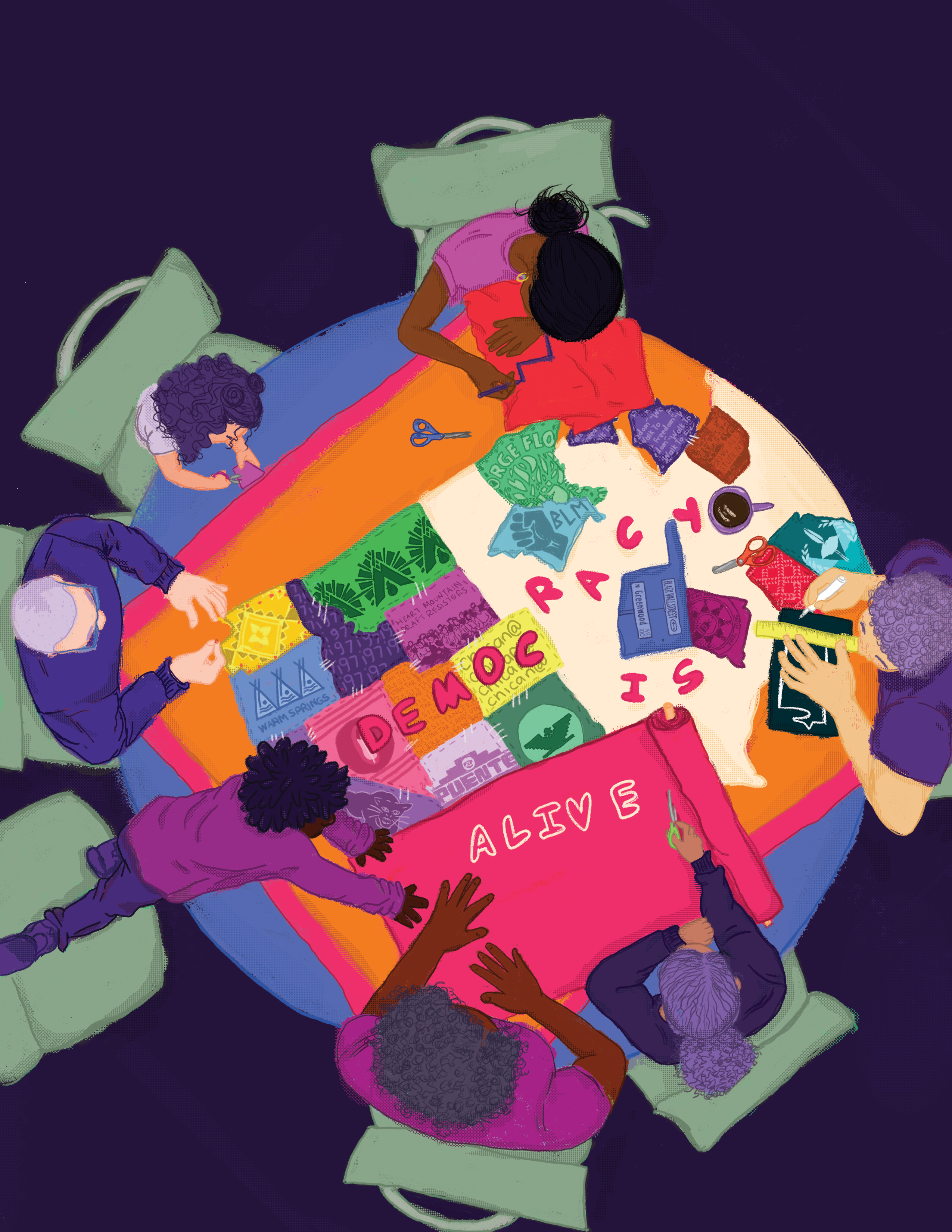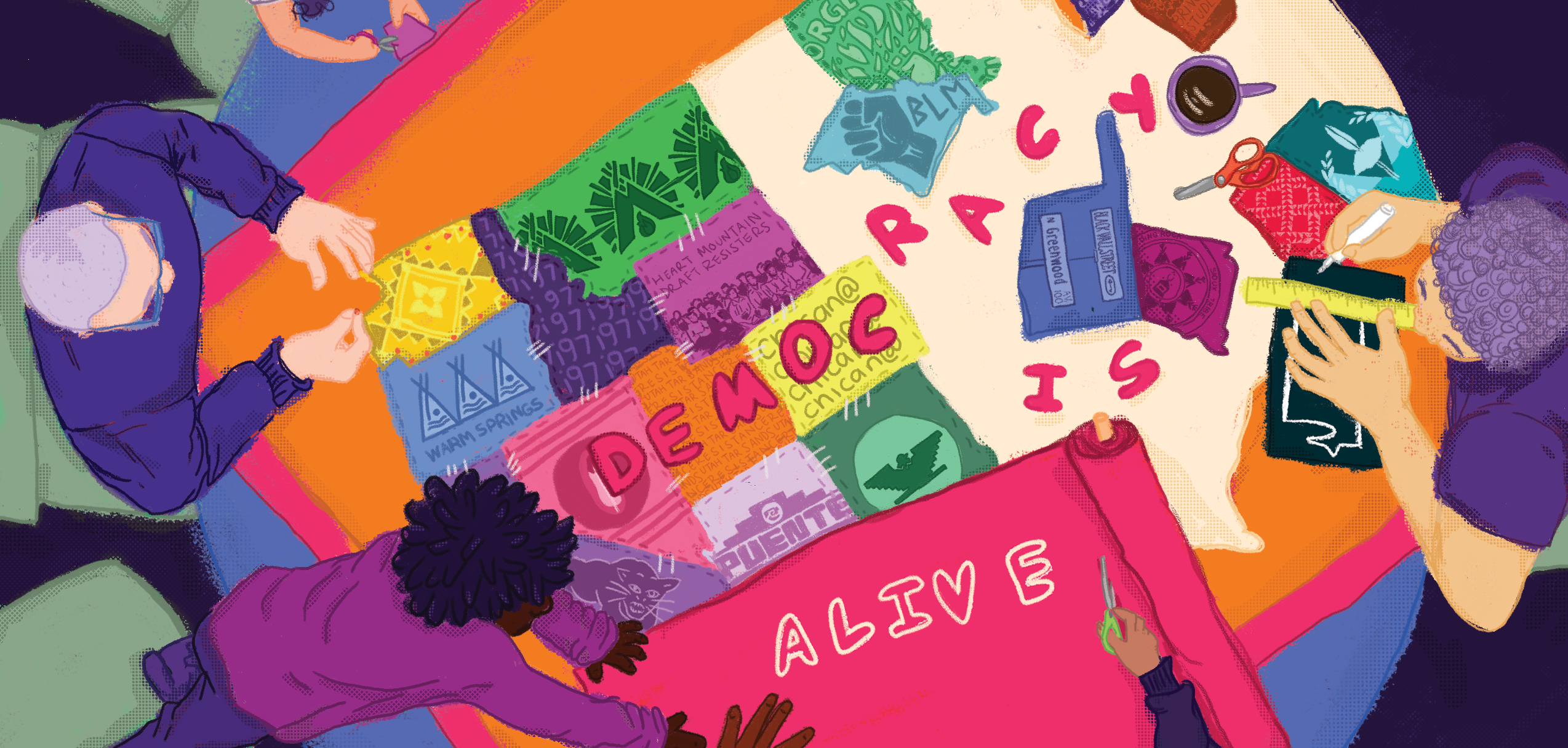Artist Zoe Newton is also PRA’s Communications Coordinator. Zoe is a visual storyteller and creative problem solver. Their work centers around community and cultural competency. In 2021, Zoe graduated from the Sam Fox School of Art and Design at Washington University in St. Louis with a BFA in Communication Design and African and African American Studies. At PRA, Zoe assists with implementing and monitoring social media strategies, creating new media projects, assisting with the communications of Religion Dispatches and designing of outward facing collateral.

Can you explain the concept of this artwork to us?
This issue of the Public Eye tells us about both the reality of where we are as a country right now, and how we can fight against the authoritarian forces threatening to take over. For the cover, I wanted to focus more on the latter and center community care and collaboration as the main concepts. The composition shows community members of diverse ages, genders, and races coming together to mend a quilt of the U.S. The quilt serves as a metaphor for the possibility of us coming together as a community to reimagine and rebuild our country. The quilt is unfinished; some states are missing or disconnected, while others are loosely stitched together. It’s an imperfect union where the stitches are obvious, the lines aren’t straight, and colors bleed over into one another. Many of the states highlight names, symbols, or cultural artifacts from different resistance movements that dreamed of an equitable and just future. This emphasis on reimagining and rebuilding is echoed in my color and design choices, from the bright colors to the crooked lines.
What role do you see art playing in resistance movements?
I think art has always played a crucial role in resistance movements. It’s a tool of communication that is incredibly fluid and accessible. It can move past censorship and show up in the cracks of our daily lives. I can’t think of any resistance movement that didn’t use it to spread their message.
Where do you draw inspiration from?
I draw a lot of inspiration from other artists and designers who work in cultural spaces. It’s important in my practice to decenter eurocentric standards of art and design. Many of the creatives that I look to for inspiration are located in West Africa and South America, and their work centers on their community’s visual culture. I also collect photos of things I find interesting in daily life and on my travels. So whenever I see something that speaks to my soul, I’ll take a picture of it and add it to my personal archive.

